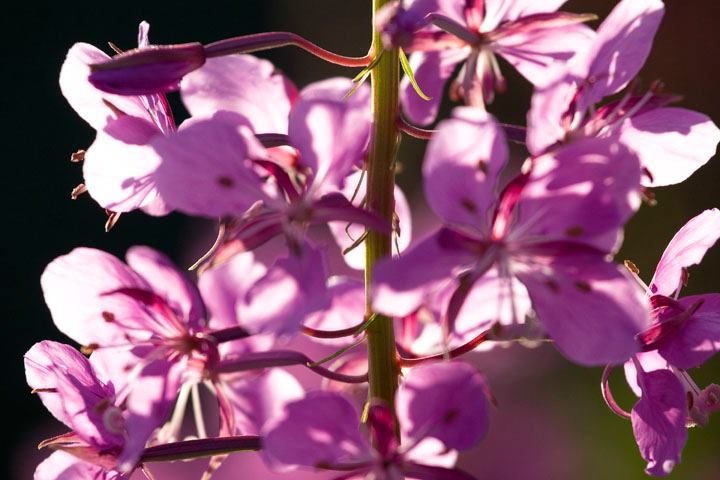What’s the deal with fireweed?
Fireweed is pretty cool. Is there any plant more Alaskan than fireweed? Probably not. You see fireweed in pretty much every Alaskan photo from Southeast to the Alaskan Penninsula. And rightfully so. Fireweed’s beautiful magenta hue relays a message of unspoiled wilderness and dreams of the frontier lifestyle.
Because fireweed is so popular, you may be surprised to learn that many people know very little about this amazing plant. In today’s blog, we are going to explore the question, “What’s the deal with fireweed?”
Fireweed is not Alaska’s state flower
Fireweed is so quintessentially Alaskan that you may think it’s the state flower. Well, think again because it’s not. The Alaska state flower is the forget-me-not, even though it’s not very common in Skagway or Southeast Alaska. Like so many other things, the origins of the forget-me-not becoming the state flower started during the Klondike Gold Rush.
A group of men known with some lame club called the Grand Igloo decided they wanted to name the forget-me-not as the authentic Alaskan flower. They eventually got their wish and the forget-me-not was named the Territorial flower and then the State flower when Alaska was granted statehood. Whatever. Some experts say that the Alaska flag’s blue background lends its hue to the forget-me-not but that makes no sense at all because the flag is dark blue and the forget-me-not is light blue. Experts Shmexperts.
I’m just saying the state flower should have been fireweed. The Grand Igloo people really blew that one. Canada’s Yukon chose fireweed as its floral emblem and they really love rubbing it in our face. Meanwhile the forget-me-not is, well, easily forgettable.
Why is it called fireweed?
When you see a massive Alaskan hillside covered in fireweed, it almost seems as though it’s ablaze with fire. This is especially true in the fall months when the flowers fall from the plant and the leaves and stalks turn bright orange and red. For this reason, you may think that fireweed was so named because it resembles fire. You would be wrong yet again. Fireweed got its name because it’s one of the first plants to grow in areas recently destroyed by fire. How about that? You learn something new every day.
You can make all sorts of food with fireweed
I like to eat. I do it every day. I’ll wager you didn’t know that fireweed is a versatile food plant. Heck, I didn’t know. I ate some fireweed honey one time but it tasted like regular honey. Apparently, people make all sorts of foods from fireweed. Syrup and jelly are sometimes made out of fireweed, according to the internet. You can add a ton of sugar to just about anything and make it taste good. I haven’t seen anyone standing in a field of fireweed and chowing down like they were at the all-you-can-eat buffet so I’m guessing it’s not that tasty without sugar.
Fireweed flowers last a long time
You can see fireweed blooming in Alaska from June into September. That’s a long time. The blooms start at the base of the flowering stalk and work their way to the top. Once the last of the colorful flowers fall away, a white cotton forms in its place. This cotton is full of seeds. When the wind blows in the fall, the cotton will drift and float in the breeze. Tourists on the final cruise ships of the season will ask if its snow and we have a hearty chuckle at their expense.
There is a poem we often hear in Alaska that goes like this, “When fireweed turns to cotton, summer is soon forgotten.” They say this because the appearance of fireweed cotton means winter is close behind.
I don’t really like this poem. It doesn’t have much zing. I made up a new version that goes like this, “When fireweed blossoms turn to cotton, thoughts of summer are soon forgotten.” My version is way better.
This was fun. I hope you feel educated and enlightened about fireweed. It’s one of Alaska’s most treasured flowers and now when someone asks you, “What’s the deal with fireweed,” you’ll know just what to say!



